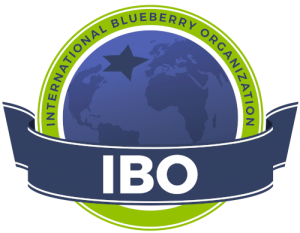The Argentine blueberry season started late this year, in the first days of September, and after a month of harvesting, the industry began to assess the progress and current state of the sector.
To grasp this year's seasonal updates, Freshfruitportal.com spoke with Jorge Pazos, president of the Argentine Blueberry Exporters Association (ABC), who said they project a 10% to 15% loss due to frosts.
Pazos said that adverse weather prevented the early fruit from reaching the market as expected, and that "the consistent cold weather caused some delays in fruit flowering."
The industry has been challenged by the weather conditions. Pazos said that while there were some warm days, they were not enough for a smooth start.
"Only now, from week 42 to week 44, are we reaching the peak of production and are beginning to see larger volumes," he detailed.
He added that the industry is trying to meet the requirements and volumes expected, "all the fruit is sent by air since we can't justify shipping it in a container. We have a strong demand for fruit, so it’s a good opportunity for air shipments."
The president of ABC emphasized that Argentina has a significant advantage as an air logistics hub, allowing access to various markets including the United States, Europe, and Asia.
Quality and Condition
Argentinian blueberries are currently halfway through the season, an ideal time to analyze the fruit's quality. “So far, there have been no reported quality issues with the arrivals; we have already shipped 3,200 tons by air to various markets,” noted Pazos.
He explained that the first varieties have been harvested, and now they are collecting the Emerald variety, which “is a fruit of great quality, condition, and firmness, averaging 14 millimeters.”
Prices
Supply and demand indicate that prices decrease as supply increases. Pazos explained that prices have been reasonable and similar to previous seasons.
He added that this season, air freight costs have increased for some destinations, specifically Southeast Asia. This is not the case for Europe and the United States.
Exports
The union leader's analysis included fruit shipment projections. He argued that they anticipate sending about 1,300 tons to continental Europe, around 1,000 tons to the United States, about 400 tons to the United Kingdom, and the rest of the shipments will be going to Canada, Asia, or Brazil.
The Latin American market has been gaining traction, with Brazil being a notable example. The president of ABC mentioned that they are sending the fruit in refrigerated trucks to São Paulo.
“Argentina has been exporting to Brazil for several years, a market that has slowly incorporated blueberries as a fruit option."
He added that, based on good consumption results, they have started promotional campaigns directed to Brazilian importers, “and we made our first shipments, which now absorb full trucks of 24 pallets.”
He said that thanks to favorable logistics, they are likely to see growth in Brazil, "it is a market where we have a 15 to 20% increase compared to the previous season.”
Argentina
As production peaks, Jorge Pazos added that harvests have begun in the province of Tucumán, located in northern Argentina.
"We project that in two weeks we will begin seeing a peak harvest in the provinces of Entre Ríos and Corrientes, ultimately reaching Buenos Aires, where the last fruit is harvested.”
He also highlighted the importance of the domestic market, since "it's absorbing a lot of the fruit at good prices, making it a very good commercial option for producers.”
He explained that the development of the local market is mainly due to the induction and promotion policies established years ago by the Argentine Blueberry Committee, “making it a fruit that is well-received and marketed more effectively.”
Additionally, they launched a campaign called “Better with Blueberries,” where they provide tips on how to store the fruit, consumption recommendations, and education for children, since blueberries are a good snack alternative.
Based on this, consumption has grown yearly, “because the fruit that does not go for export, goes to the domestic market.”
"80% of Argentina's blueberry production is organic," he said, “which adds value for certain markets and allows us to differentiate ourselves.”
24.10.24
Source: Freshfruitportal.com

